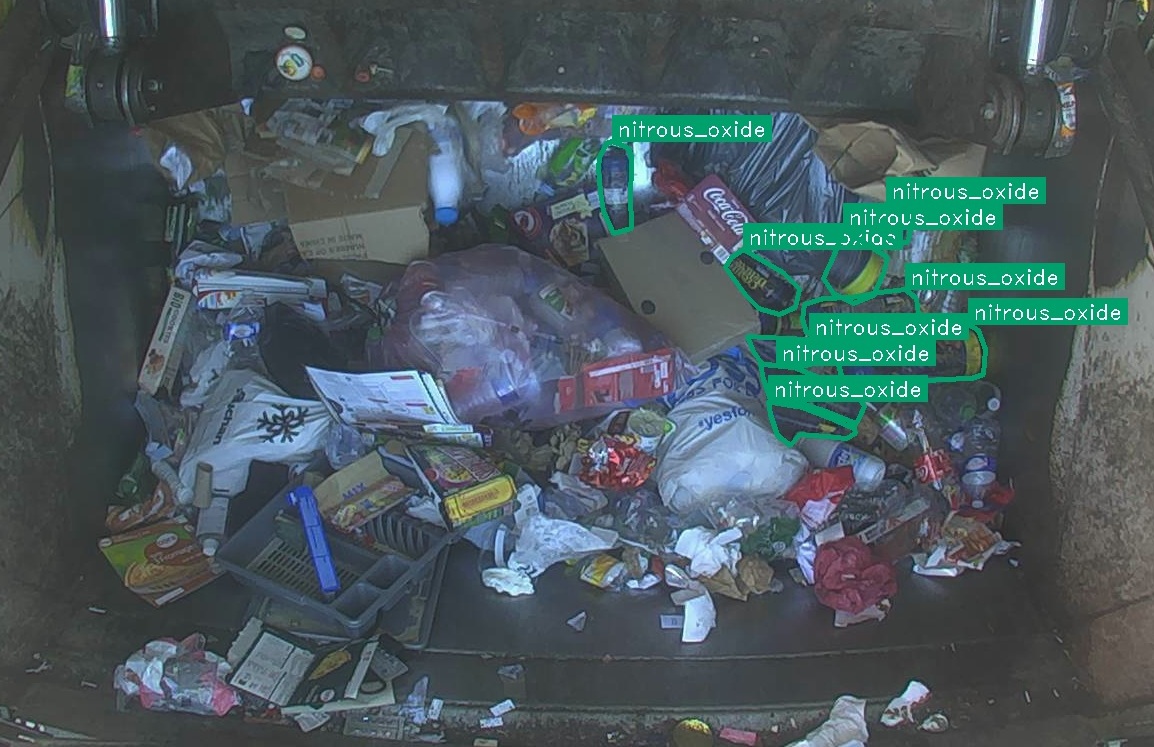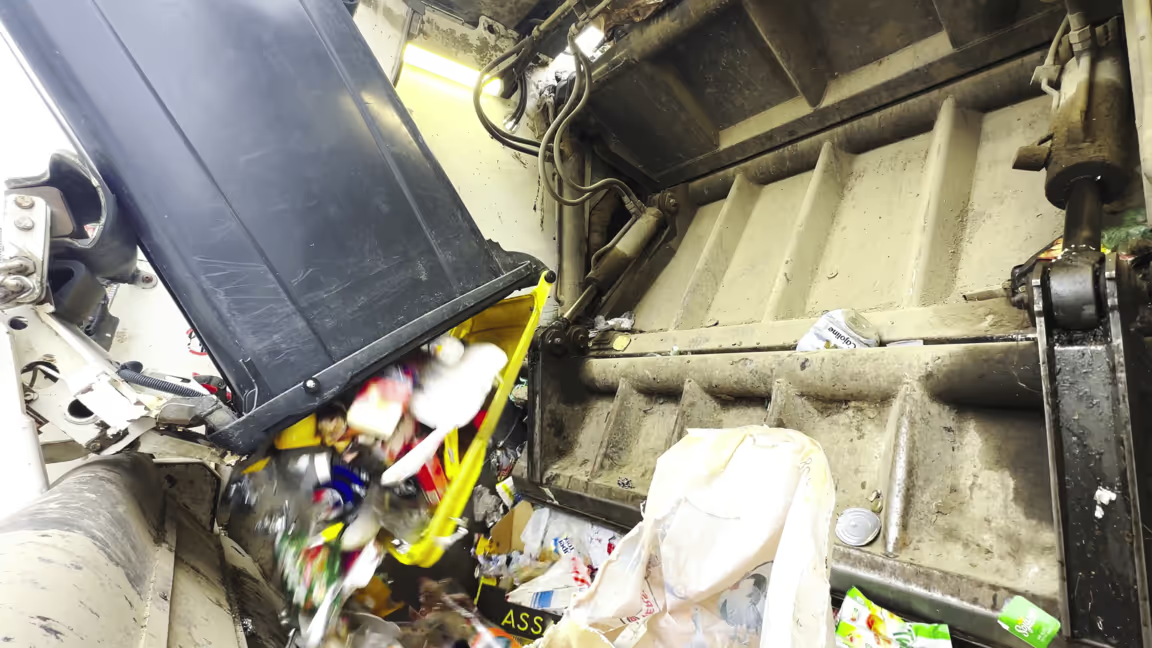Un camion de collecte en flammes, un incinérateur qui explose... les articles sur ces sujets sont devenus tristement banals. Ces incidents, souvent spectaculaires et dangereux, ne sont pas le fruit du hasard. Depuis le début de l’été 2025, Strasbourg, Caen, Saint-Martin de Mieux ou encore Faudoas, sont quelques exemples de collectivités concernées par la présence de déchets dangereux. Comprendre l'origine de ces départs de feu et explosions est la première étape pour mettre en place des solutions efficaces et garantir la sécurité des opérateurs de collecte tout en limitant les coûts de gestion.
Sorting errors: a direct threat to collection
Les incendies dans les bennes à ordures ménagères (BOM) sont un risque opérationnel majeur pour les collecteurs, qu'ils soient publics ou privés. Ils paralysent les tournées, endommagent des équipements coûteux et, surtout, mettent en danger la vie des agents de collecte et du public. La cause principale de ces événements est la présence de déchets interdits dans les flux de collecte, notamment dans les bacs d'ordures ménagères résiduelles (OMR) ou de tri sélectif.
Piles au lithium, feux d’artifice ou bouteilles de gaz sont à l’origine de ces départs de feu. Le mélange de ces produits avec d'autres déchets crée des conditions propices à une réaction chimique ou à une inflammation spontanée. La compression effectuée par la pelle de compactage ne fait qu'augmenter ce risque, en provoquant des étincelles ou en rompant des contenants sous pression.
Lithium batteries: the number one source of fires
Lithium-ion batteries are ubiquitous in our daily lives: smartphones, laptops, electronic cigarettes, electric bicycles and more. When improperly disposed of in household waste garbage cans, they represent an explosive hazard. Once in the truck's skip, the pressure exerted can puncture or crush them.
This mechanical shock causes an internal short-circuit, resulting in thermal runaway. The battery then heats up uncontrollably, until it catches fire or explodes. This initial reaction can quickly ignite surrounding waste, such as paper and plastic, turning the skip into a veritable inferno in a matter of minutes.
Nitrous oxide cylinders and pressurized containers
Another major source of danger is nitrous oxide cylinders, either in large cartridge format or in do-it-yourself gas cylinders (butane, propane). Even when supposedly empty, they still contain a residue of pressurized gas.
Leur présence dans un camion poubelle peut entraîner des explosions avec la compaction, pouvant causer des dommages aux équipiers de collecte. Pour autant, une simple étincelle générée par le frottement de métaux dans la benne pourrait enflammer instantanément le gaz, provoquant une explosion et un départ de feu. Les bouteilles de protoxyde d'azote sont, quant à elles, plus rares à exploser dans une trémie. Il n’existe pas encore de précédent car les contenants sont bien plus solides que les petites bonbonnes de gaz. Toutefois, leur popularité croissante sur la voie publique pourrait voir émerger de nouveaux risques pour les professionnels de la collecte.
Additional victims: treatment centers
Whether at waste-to-energy plants (UVEs) or sorting centers, fire outbreaks do not spare these essential links in the waste management chain. In 2024 alone, several dozen incidents were recorded throughout France, directly affecting the safety of personnel and the continuity of operations.
According to data from the Bureau d'analyse des risques et des pollutions industriels (Barpi), fires account for 83% of the 578 accidents recorded at this type of facility between 2014 and 2021. These incidents have also risen "sharply since 2010", with an increase "more marked than that observed in other types of facility".
La problématique des objets dangereux, comme les bouteilles de gaz ou de protoxyde d’azote, prend une ampleur préoccupante : en Haute-Savoie, plus de 4 000 bouteilles ont été collectées dans les rues en 2025. À titre d’exemple, une seule de ces bouteilles peut causer une explosion significative lors de son passage dans les fours des UVE. Des conséquences matérielles majeures avec des arrêts d’installation, des coûts de réparation lourds pour les collectivités et un manque à gagner avec l’énergie non produite. Chaque arrêt entraîne un coût entre 20 000€ et 200 000€ selon la FNADE/SVDU, totalisant un coût moyen par an de 500 000€ par UVE touchée.
These incidents not only compromise waste recovery, but also threaten the sustainability of treatment infrastructures.
How technology can prevent fires

Faced with the increasing number of fires involving refuse trucks, prevention through awareness-raising is reaching its limits. It is becoming strategic to adopt innovative solutions to identify and understand the origin of sorting errors. Real-time data analysis offers local authorities and collection operators precise levers for action to make their operations safer.
By equipping collection trucks with image analysis systems, it is possible to automatically characterize hazardous waste in just a few minutes. Thanks to this system, teams are alerted during their rounds and are able to take corrective measures to limit the outbreak of fires.
This technology enables :
- Identify high-risk areas: By precisely mapping the addresses where dangerous sorting errors are most frequent, local authorities can target their communication campaigns.
- Deploy targeted awareness campaigns: Sorting ambassadors can intervene more effectively, focusing on sectors, streets or even buildings identified as problematic.
- Measuring the impact of campaigns: By tracking changes in sorting quality in targeted areas, it is possible to assess the effectiveness of actions taken and adjust them if necessary.
- Optimize safety: knowledge of black spots enables collection protocols to be adapted to minimize risks, for example by informing teams of areas where greater vigilance is required.
This data-driven approach transforms waste management from a reactive to a proactive strategy. It doesn't just deal with the consequences of sorting errors, but directly addresses their causes.
Safety is the business of all innovations
Garbage truck fires are not inevitable, but a symptom of a waste management system that needs to be rethought. While the individual responsibility of citizens is essential, those involved in waste collection must equip themselves with tools that are equal to the safety and environmental challenges. Responsible sorting requires not only individual action, but also intelligent, optimized management of waste flows.
Data analysis technologies provide a concrete solution for reducing the risk of fire. By providing a clear and detailed view of the quality of sorting in a given area, they enable us to build effective prevention strategies, protect collection operatives and preserve equipment.






